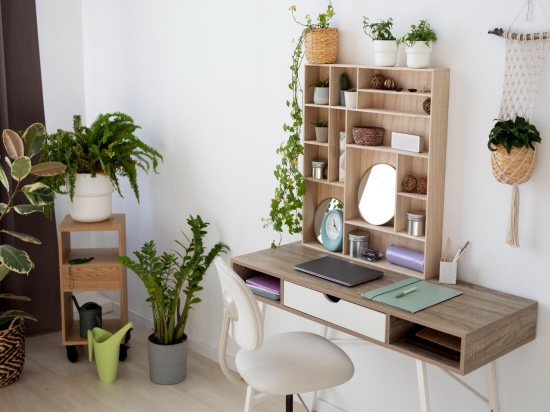Embracing Natural Elements: Biophilic Designs in the Modern Office

Creating a productive and healthy work environment has become crucial in today’s fast-paced corporate world, where stress and burnout are common. One innovative approach that is gaining momentum is the incorporation of biophilic designs in office fitouts in Melbourne. Biophilic design aims to bring nature into the workplace, creating a harmonious and revitalising atmosphere that promotes employee well-being and productivity. This article will explore the benefits of embracing natural elements through biophilic designs and how they can transform modern office spaces.
Imagine walking into an office space filled with lush greenery, natural light streaming through large windows, and the soothing sound of a water feature in the background. This immersive experience can instantly uplift the mood and create a connection to the natural world, which is often absent in conventional office settings.
The Power of Biophilic Design
Biophilic design, inspired by the innate human affinity for nature, harnesses the healing power of natural elements to create work environments that foster well-being and productivity. Research has shown that incorporating biophilic elements in the office can significantly reduce stress, enhance creativity, improve cognitive function, and boost employee satisfaction and engagement.
Bringing Nature Indoors
One of the fundamental principles of biophilic design is to bring elements of nature indoors. This can be achieved by strategically placing large and small plants throughout the office space. Indoor plants improve air quality and create a calming and visually appealing environment. Living walls or green screens can be installed to cover large areas, adding a touch of nature to otherwise sterile walls.
Maximising Natural Light
Another essential aspect of biophilic design is optimising natural light. Offices with ample natural light have been found to enhance mood and productivity while reducing eyestrain and fatigue. Architects and designers often incorporate large windows, skylights, and light wells to maximise the amount of natural light in a workspace. Open floor plans and glass partitions can also allow light to penetrate the office deeper.
Nature-Inspired Materials and Textures
Incorporating natural materials and textures is a key element of biophilic design. Wood finishes, stone accents, and natural fibres can be integrated into furniture, flooring, and wall coverings. These elements add warmth and beauty and evoke a sense of connection to the natural environment. Organic patterns and textures can be incorporated into the artwork, upholstery, and decorative features, further enhancing the biophilic aesthetic.
Engaging the Senses
Biophilic design goes beyond visual elements and engages all the senses to create a truly immersive experience. The sound of running water from indoor fountains or water features can provide a soothing and calming effect. Natural scents, such as essential oils or living plants with pleasant aromas, can be used to stimulate the olfactory senses. Additionally, incorporating elements of nature that invite touch, such as natural stone or textured fabrics, can further enhance the connection to the natural world.
Conclusion
Embracing biophilic designs in modern office fit-outs is a transformative approach to creating healthier, more productive workspaces. By incorporating natural elements, optimising natural light, and engaging all the senses, employers can provide employees with a rejuvenating and inspiring environment. As more businesses in Melbourne recognise the benefits of biophilic design, office spaces are evolving into harmonious sanctuaries that foster creativity, well-being, and overall satisfaction. So, consider incorporating biophilic design principles in your office to create a thriving workplace where employees and businesses can flourish.




























